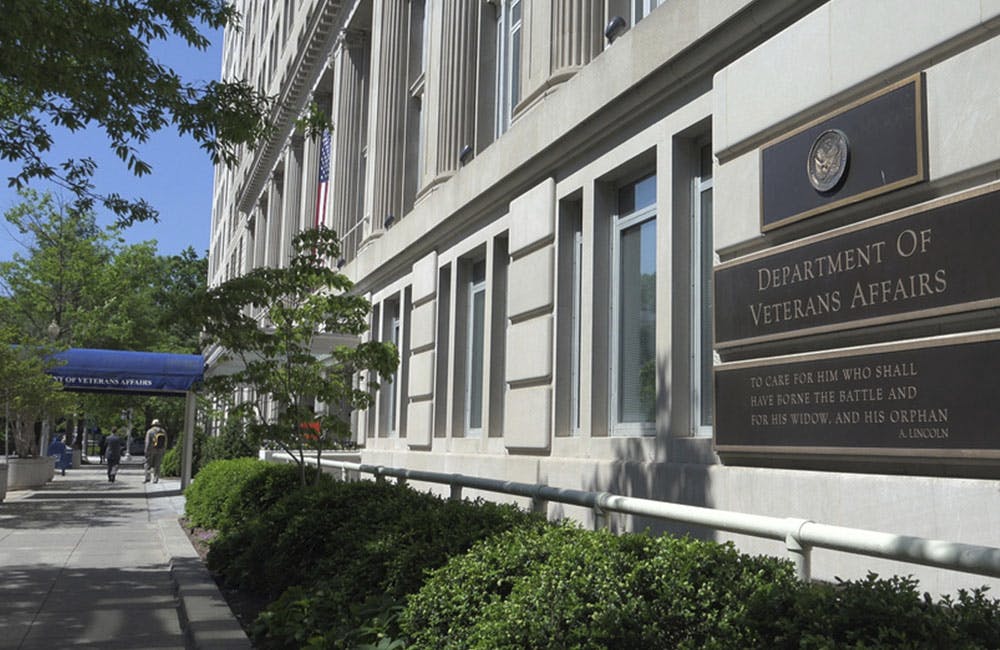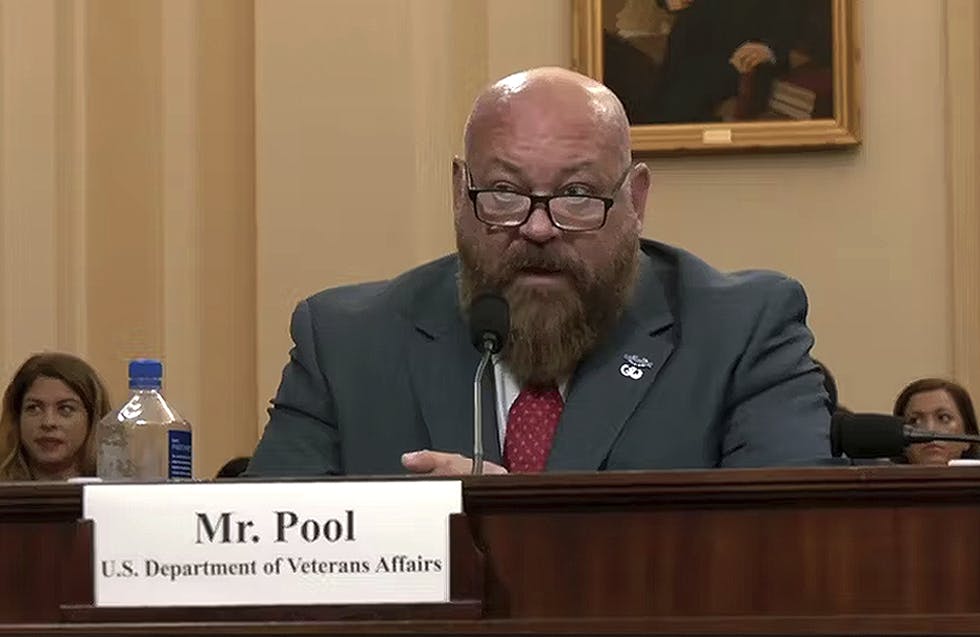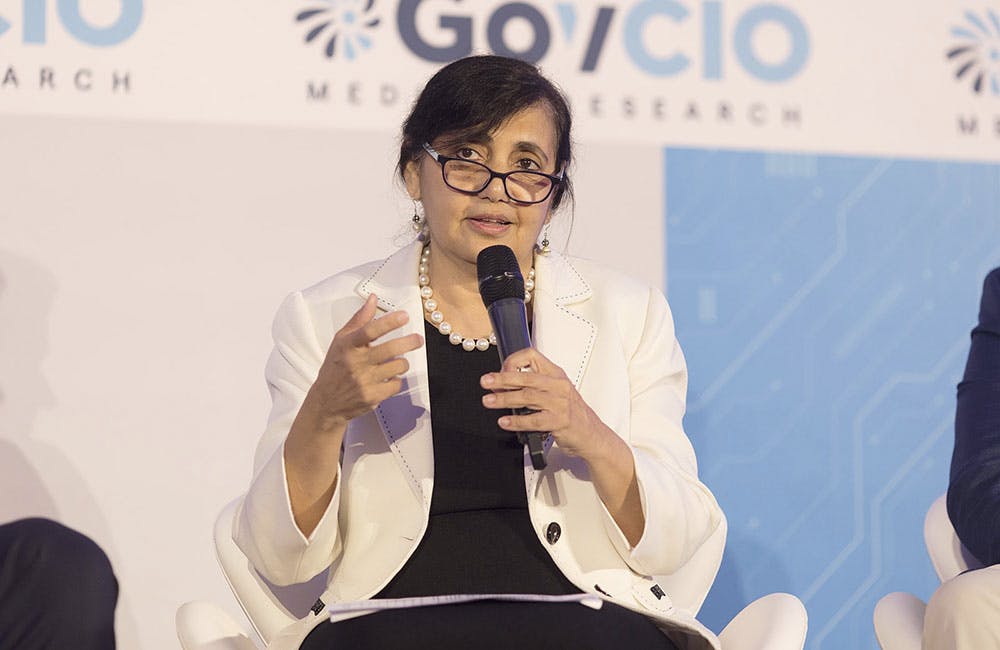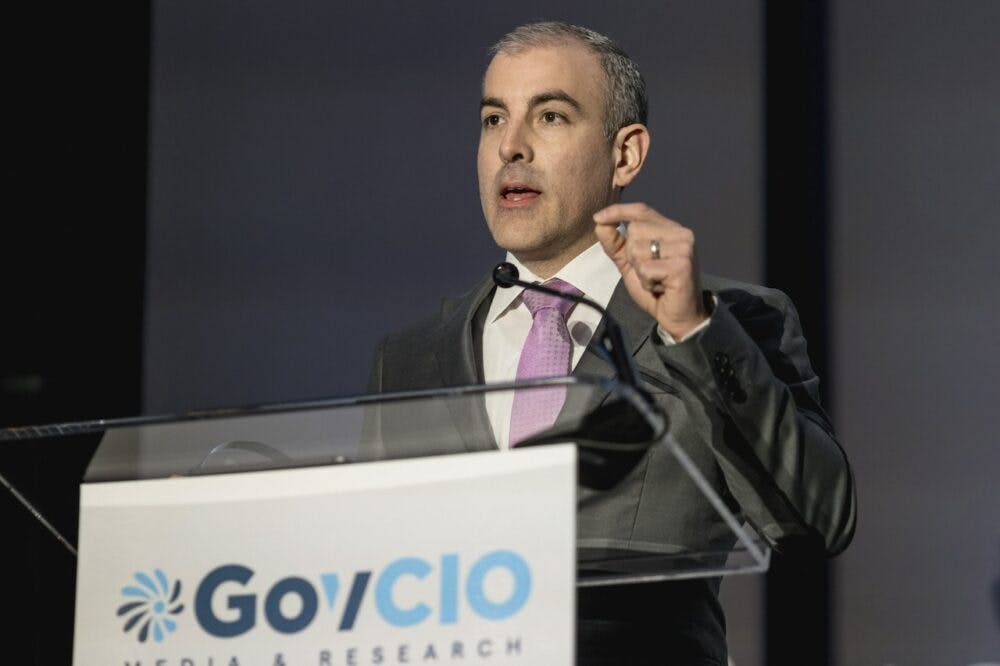New DHS Secretary Sets Sights on Cybersecurity
Kristi Noem plans to utilize “cutting-edge” technologies to combat emerging cybersecurity threats and support the agency’s workforce.

The newly confirmed Department of Homeland Security (DHS) Secretary Kristi Noem has targeted cybersecurity and workforce development as priority areas to secure the nation’s critical infrastructure and prepare for future challenges, building on her track record of advancing tech as South Dakota Governor.
The Senate confirmed Noem as DHS secretary in a 59 to 34 on Jan. 25, succeeding Alejandro Mayorkas and making her the third member of President Donald Trump’s Cabinet. Noem pledged to protect the nation’s digital infrastructure and bolster cybersecurity during her Senate Committee on Homeland Security and Governmental Affairs hearing on Jan. 17.
“As we face the evolving threats of the 21st century, the mission and success of DHS is more critical than ever. We must be vigilant, proactive and innovative to protect the homeland. The challenges before us are significant. We must secure our borders against illegal trafficking and immigration. And we must safeguard our critical infrastructure against cyberattacks, respond to natural disasters and combat terrorism,” Noem said in her opening testimony.
The Cybersecurity and Infrastructure Security Agency (CISA), housed within DHS, released its year in review in Dec. 2024, which highlighted advancements the agency has made with cyber incident reporting. The report noted the agency’s Protective Domain Name System (DNS) service blocked 1.26 billion malicious connections targeting federal agencies in fiscal year 2024.
“Throughout the year, CISA issued detailed information on [People’s Republic of China] (PRC) threats, such as a joint CSA on the PRC state-sponsored cyber group known as Volt Typhoon, which compromised the IT environments of several critical infrastructure sectors including Communications, Energy, Transportation and Water and Wastewater,” the report stated.
As cyber threats increase, Noem said she will “prioritize a comprehensive, whole-of-government approach to cybersecurity” and leverage technology advancements to secure critical infrastructure, ranging from the nation’s energy grids to financial systems, which are “under constant attack by foreign adversaries and criminal actors.”
“In the coming days, we have to think and plan bigger, faster and smarter. I fully acknowledge that we in Washington do not have all the answers. Therefore, I will leverage public-private partnerships and advance cutting-edge, state-of-the-art technologies to protect our nation’s digital landscape. I have a proven track record doing this in South Dakota. I have helped make Dakota State University a global leader in cybersecurity education because we recognize the need to address this emerging threat. I will take this proactive approach if given the opportunity to serve as Secretary,” Noem said.
As South Dakota Governor, Noem oversaw a state budget of over $7 billion and a state employee workforce of more than 13,000. Noem will now lead the charge for DHS’ 260,000 employees. She pledged to provide the workforce with the “tools, resources and support they need to carry out their mission effectively.”
“It’s also my responsibility to do everything that I can to give you the resources that you need to do your job,” said Noem as she welcomed her staff last week, following her Senate confirmation. “You need the training, you need the equipment and the resources to make sure you’re prepared.”
President Donald Trump has called on government to boost efficiency and innovation. Trump’s vision is reflected in his recent executive orders to establish the Department of Government Efficiency (DOGE), implement federal workforce reforms and boost AI innovation to remain competitive against foreign adversaries.
Noem emphasized efficiency and encouraged the workforce to “think three steps ahead so that people will have what they need before they need it” during her welcome.
“How we can pre-deploy resources, how we can be more efficient and how we can be more nimble to respond to the situations that we find ourselves in,” said Noem. “If you want people to perform with excellence, you have to equip and prepare them to do so, and that is my commitment to all of you, that we will walk through every single situation together, and I’ll prepare you as much as I can for it.”
This is a carousel with manually rotating slides. Use Next and Previous buttons to navigate or jump to a slide with the slide dots
-

NSF Wants Industry Driving Quantum Innovation
The agency is pushing for partnerships to enhance the research community as Congress weighs additional legislation.
3m read -

Modernizing Critical Infrastructure in the Face of Global Threats
Officials are expanding the latest strategies in boosting defense infrastructure, including securing satellite communications, upgrading enterprise-wide technology, optimizing data management.
20m watch -

DOD Accelerates Software Modernization with Agile DevSecOps Push
The Pentagon's software implementation plan tackles cultural hurdles and integrates security early to deliver critical capabilities faster.
6m read -

White House Unveils AI Action Plan to Secure Global Dominance
The strategy outlines steps to accelerate private sector innovation, build critical infrastructure and advance U.S. leadership in AI policy and security.
3m read -

VA's Platform One Powers Rapid Innovation to Bolster Digital Services
VA's Platform One accelerates software development timelines from weeks to hours, ultimately enhancing digital services for veterans.
5m read -

VA CIO Targets Modern IT and Smarter Workforce Alignment
Agency leaders told lawmakers they are focused on trimming legacy systems and restructuring its workforce to streamline operations.
3m read -

The Next AI Wave Requires Stronger Cyber Defenses, Data Management
IT officials warn of new vulnerabilities posed by AI as agencies continue to leverage the tech to boost operational efficiency.
5m read -

Federal CIOs Push for ROI-Focused Modernization to Advance Mission Goals
CIOs focus on return on investment, data governance and application modernization to drive mission outcomes as agencies adopt new tech tools.
4m read -

DOD Can No Longer Assume Superiority in Digital Warfare, Officials Warn
The DOD must make concerted efforts to address cyber vulnerabilities to maintain the tactical edge, military leaders said at HammerCon 2025.
4m read -

Tracking CIOs in Trump's Second Term
Stay informed on the latest shifts in federal technology leadership as new CIOs are appointed and President Trump's second term takes shape.
6m read -

DHA CDAO Spearheads Master Data Catalog to Boost Transparency
Jesus Caban plans to boost DHA's data maturity through a new master data catalog, governance frameworks and inventory of tech tools.
5m read -

Inside Oak Ridge National Lab’s Pioneer Approach to AI
Energy Department’s Oak Ridge National Lab transforms AI vulnerabilities into strategic opportunities for national defense.
22m listen
















